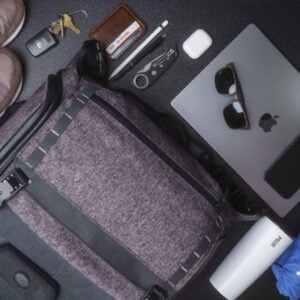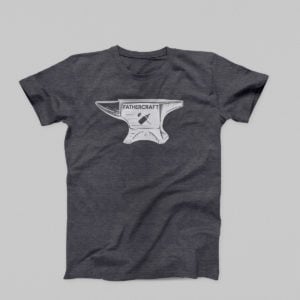IMPORTANT NOTE: In April 2023, Miku users began reporting issues with the Miku Pro; for those reporting issues, the monitor abruptly stopped working. Miku Inc. released a statement linking the product malfunction to a firmware update conducted during the months of November 2022 through April 2023 and offered to send impacted users a free replacement. However, on August 14, 2023, Miku Inc. filed for bankruptcy. This sequence of events concerns us at Fathercraft, and we are not recommending Miku products at this time. The product review below was written prior to these events and should be read only with the above context. It may be more worthwhile to check out our other baby monitor reviews here.
The Miku baby monitor is a wifi monitor that tracks your baby’s sleeping and breathing patterns. It’s in the same family as other wifi monitors we’ve reviewed, like the Nanit Pro, and the Lollipop Cam. So, how does it stack up? Let’s dive in.
Please note: we received a free Miku from the manufacturer as they were interested in our review. We don’t guarantee positive reviews in exchange for free products, and always disclose free products. Also, Fathercraft is reader supported, meaning we may earn a commission if you click a link and make a purchase. More here.
A review of the Miku Pro smart baby monitor
You know the phrase “sleep like a baby?” Well, there’s a reason people say that. It’s because when babies are asleep, like, really asleep, it can be hard to tell if they’re actually breathing. They’re so still, and their chest is so small, that figuring out if they need help or are busy having sweet dreams is enough to make any parent get up and check on them every 20 minutes, or as we like to say, slowly lose their mind.
Enter smart baby monitors, like the Miku Pro baby monitor, that not only alert you when your baby is crying or fussy but also let you monitor your baby’s breathing.
If you prefer your reviews in video form, here’s our video review of the Miku Pro. If not, keep scrolling.
The Miku Pro smart baby monitor (this is the second version of Miku’s baby monitor, and a major upgrade over the Miku Original) connects to your smartphone and has military-grade technology that tracks your baby’s breathing and movements just using the camera and software so you don’t need to worry about wires or wearables. All you need to do is mount the Miku baby monitor camera above your baby’s crib, then download their smartphone app. It’s supposed to be a breeze to set up and use.
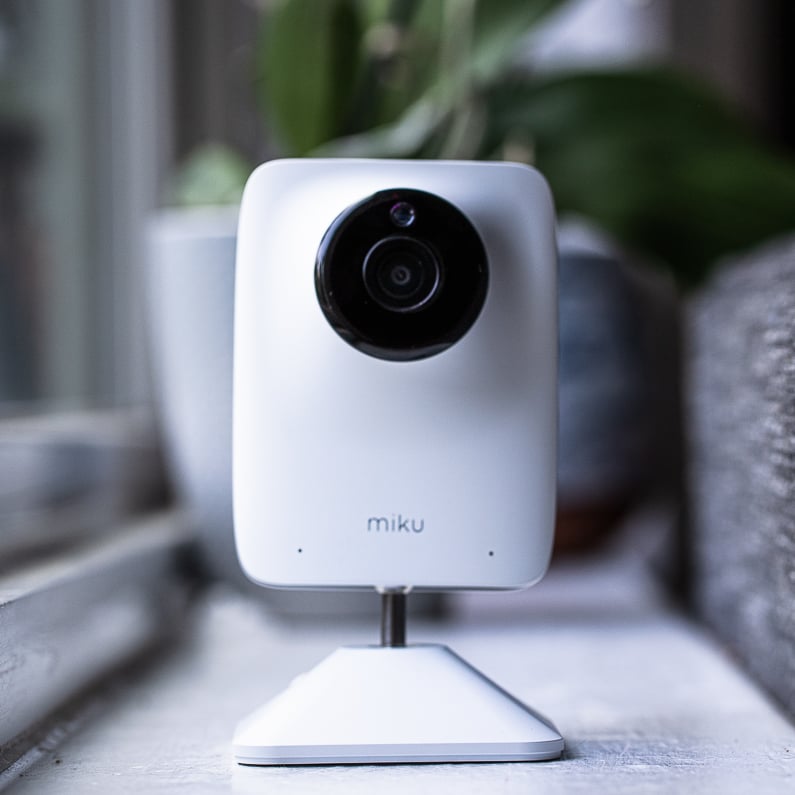
We put it to the test.
What is the Miku smart baby monitor?
Miku, like many of the more recent baby monitor companies to join the scene, notes that the company is made up of moms and dads who understand the panic parents undergo when it comes to getting their babies to sleep and making sure they stay safe while they sleep. And, we agree, if you’re designing something to used by parents, get parents’ perspective on it. So, good work Miku. The company also touts its “military engineers” as providing next-level tech. But, all of other baby monitors we’ve reviewed have their own spin on this talking point.
Speaking of the military, all active-duty military, veterans, retired military, and military spouses get an automatic 10 percent discount. First responders, including police, firefighters, and EMT also get a 10 percent discount, available on Miku’s website.
Back to the monitor. Like other baby monitors, the Miku consists of a child unit—a camera with a speaker and microphone, and a parent unit. In the case of the Miku Pro, the parent unit is an app that you download on your smartphone (both iOS and Android apps are available). You can also download the app on your iPad or Android tablet, though note the app isn’t natively designed for a tablet (it’ll be small).
Note that while anyone who is going to be using your Miku monitor (like babysitters, grandparents, etc.) will need to download the app on their own device, you can control who gets access privileges from your app. This provides enhanced security so that only the people you grant access to can actually get access to the Miku camera. It’s also really handy when you have a babysitter or the in-laws watching your baby.
Here’s a rundown of the tech involved in the Miku smart baby monitor:
The Miku camera
Like most other cameras in the new class of wifi baby monitors, Miku works with a bird’s-eye view, so you’ll need to mount the Miku camera to the wall above your baby’s crib. The Miku camera also houses what Miku calls “SensorFusion technology“. This is what captures your baby’s breathing, sound, and movement patterns without a wearable device (our other top pick for a wifi monitor that monitors breathing is the Nanit (our Nanit Pro review here, using their tech requires a special ‘belly band’ or sleepwear with a geometric pattern on it that helps the camera pick up movement.
Mounting the camera
You can still use the Miku monitor if it’s not attached to a wall. The support page says that as long as the monitor is six feet away from your baby and out of reach of your baby (obviously), it should still work. But, for optimal performance, the Miku baby monitor should be mounted to your wall. If you have drywall walls you won’t even need a drill—everything you’ll need to mount your Miku camera to drywall is included in the package along with your monitor.
If you have another type of wall, such as concrete, brick, plaster, or sheetrock (like me), you will need a drill. Miku includes mounting supplies for other types of walls in the box, so you shouldn’t need to go out and buy anything else. However, if you’re like me and hate drilling holes into sheetrock but still want the monitor mounted, you might want to get crafty and make your own baby monitor stand. You can check out what I did around minute 4:30 on this video review of the Miku smart baby monitor (though be sure to make sure cords are kept at least 3 feet from your baby).
One downside of doing a DIY mounting stand, aside from the whole DIY thing, is that you might end up with a longways view instead of a wide view, and it’s harder to get a perfect view of your baby if you go this route. There are ways around it, like mounting it to the wall as intended or setting it up without a stand, but It’s something to be aware of.
Camera image quality
Bird’s-eye view is perhaps the most critical component to a great picture of what’s going on in your baby’s crib. The next most important factor is the quality of the image that you see. The original Miku smart baby monitor had an HD imaging at 720p, the Pro version is now full 1080p. Also like other video monitors, the Miku camera has night vision, so you can see what your baby is doing in the night when she’s fussing or making noises. In testing, we found the Miku Pro’s image quality to be quite strong and a major upgrade over the original, but, particularly in the dark with night vision turned on, not quite as good as Nanit Pro.
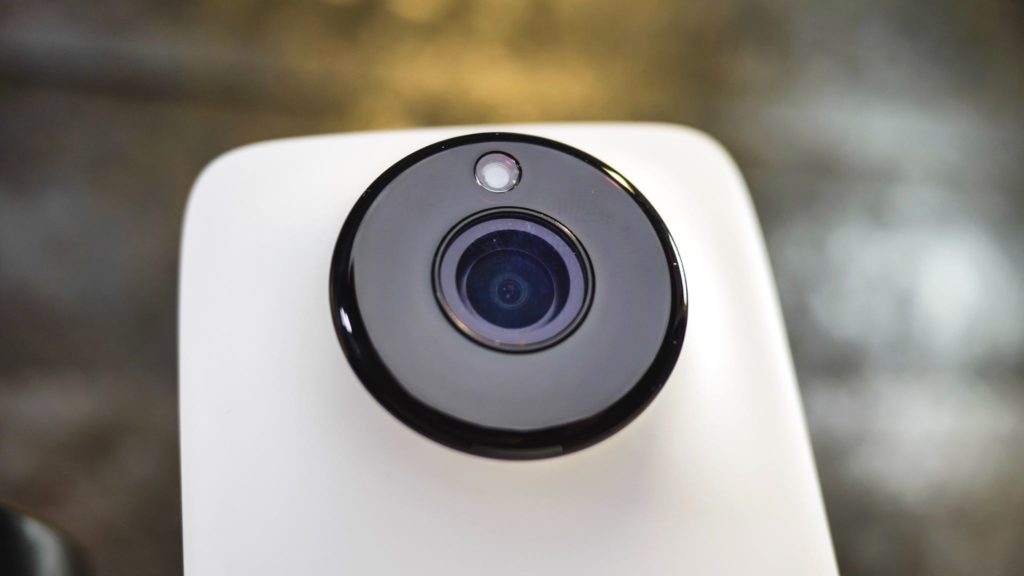
While we find excellent image quality to be a big benefit in a baby monitor, there’s certainly a point of diminishing returns past a certain point, and Miku does get the job done. Sure, you need to be able to see your baby, but do you really need crystal clear imaging? For a lot of parents, monitoring your baby’s movements and breathing is a lot more important than watching your baby sleep through a camera.
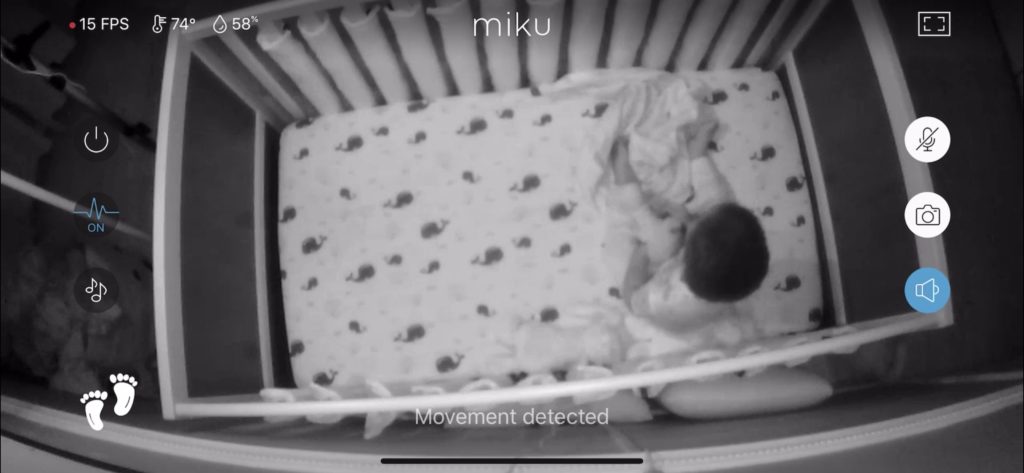
Audio
Hearing your baby and being able to speak to your baby might be more important to you than being able to see your baby in high definition.
One issue we have with the Miku baby monitor is that the two-way communication feature has a 15-second timer. As I mention in my video review, this can make it really hard to get through my power ballads as I lull my son back to sleep. The 15-second timer can be annoying, but it isn’t necessarily a deal breaker.
The camera also has a white noise option. Now, if your baby is really into trippy sci-fi noises, then Miku has you covered—there are some deeply weird “white noise” options on the Miku. But, there’s also the classic “white noise”. And, your baby will be able to enjoy sci-fi ambiance through speakers that might begin his or her path to audiophile—Miku makes a big deal about “dual Ole Wolff speakers” which, we admit, without being audiophiles ourselves, do sound pretty darn good, even if they also seem somewhat unnecessary.
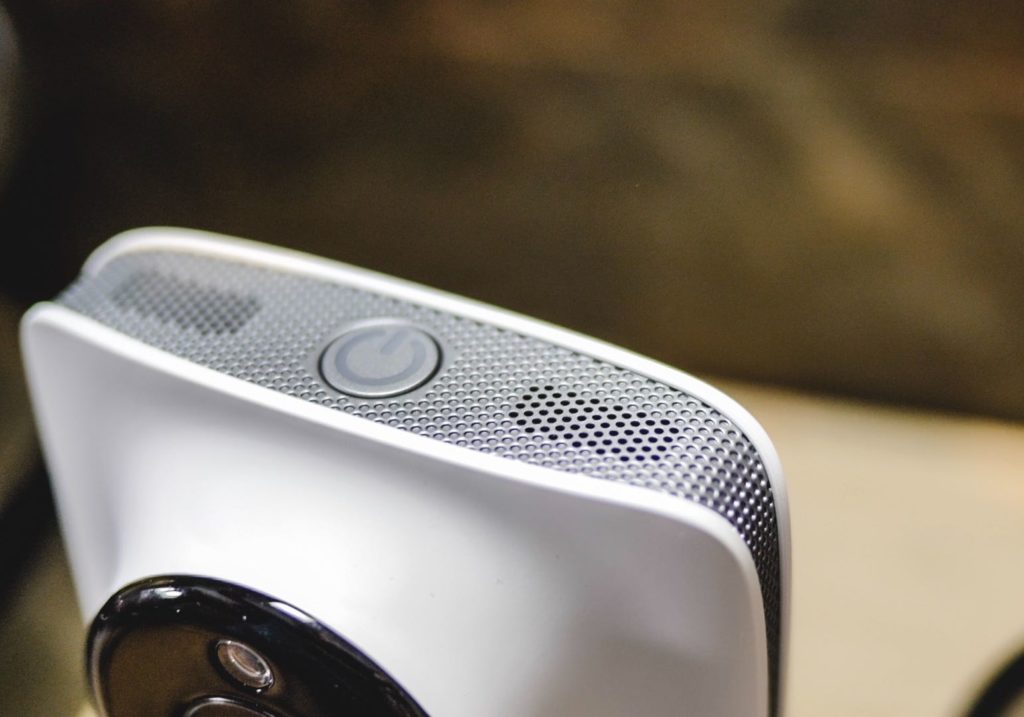
The Miku smart baby monitor app
You and anyone who you authorize as a user can view your baby and keep track of her movements and actions through the Miku app, which you’ll download on your smartphone. At this point in time, the Miku app only works on smartphones. You can also use the app on an Android tablet or iPad, but the app isn’t native to tablets (it’ll be small on you screen).
Miku has done a ton of work upgrading its app over the years, and deserves a most-improved award in the baby monitor space — early versions of the app were buggy and the user interface was overwhelming. Not so in 2023.
Here’s a look at what’s inside.
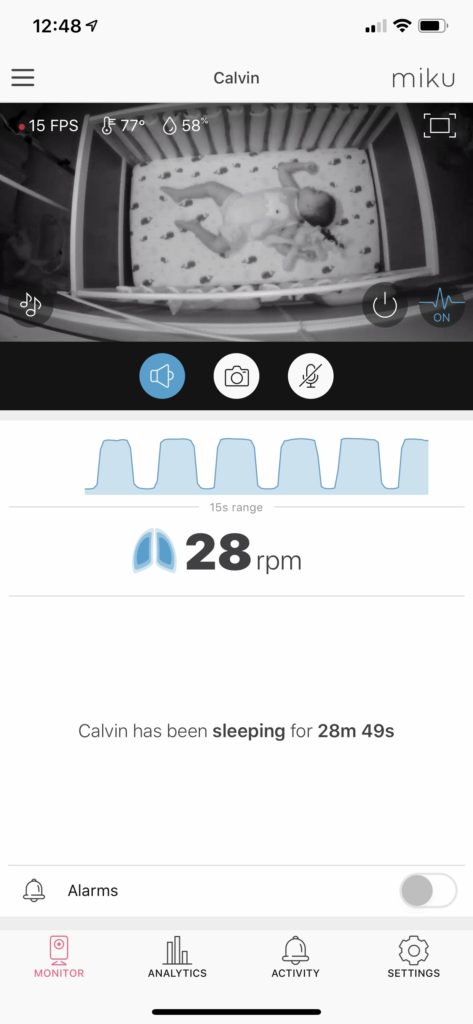
Analytics
The analytics tab in the app has seen a major overhaul of late that makes it remarkably more useful. Within the analytics tab, you get an overview of daytime and nighttime sleep summaries, and an overall analysis of your baby’s sleep at night. Within the activities tab you can scroll through video recordings detailing sleep activity like movement, sound, and non-movement.
And, critically, all of Miku’s analytics features are available without a subscription — a major selling point vs other monitors (it seems like just about every baby monitor out there has a subscription these days). And, to be clear, Miku does have a subscription too, called Care+, it’s just not required for any of the core features of the app. More on Care+ in a bit.
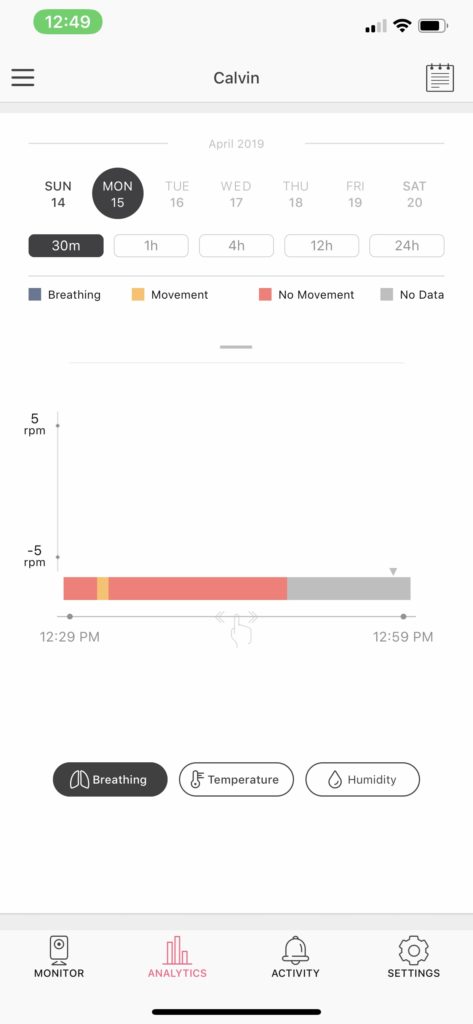
Here are some of the things the Miku smart baby monitor tracks:
- Activity
- Movement
- Sound
- Sleeping pattern
- Breathing pattern
- Temperature and humidity
- Ambient light
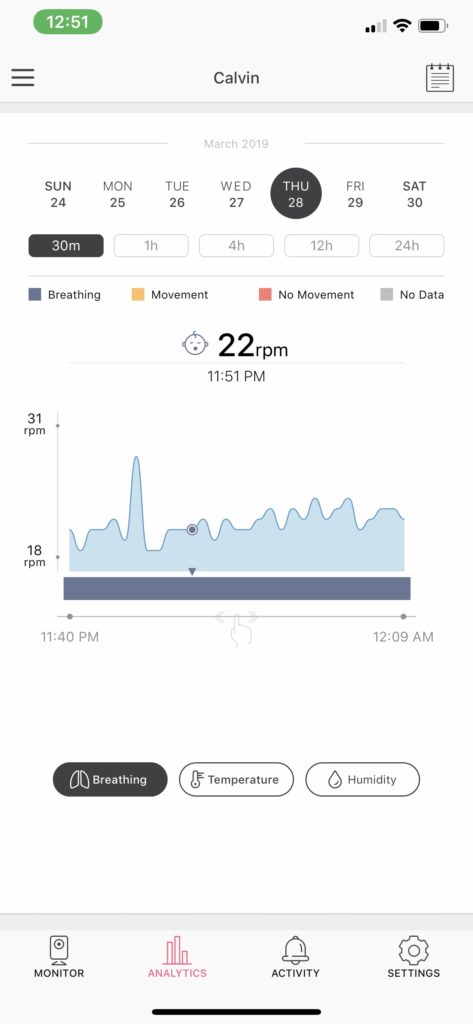
Alerts
As we’ve discussed in other reviews of monitors that use a smartphone as the parent unit, there are a few nuances you’ll want to be aware of and differences from traditional baby monitors that have a dedicated parent unit.
First, you’ll need to have your smartphone in a state in which you’re able to hear and see your baby. Meaning, you can’t use airplane mode or Do Not Disturb. You’ll need to allow notifications from the Miku App and adjust those to your liking.
In addition, you’ll need to enable “background audio”, which is the setting that allows the Miku app to control your phone’s speakers even if your phone screen is off, or you’re using another app. With background audio turned on, you’ll be able to hear your baby crying while you scroll dance vids on TikTok during nap time.
Care+
Miku introduced Care+ in 2022, presumably because just about every wifi baby monitor on the planet has a subscription. But, two things we’ll note:
- Miku did an honorable job keeping the core features of the monitor free — it’s 100% functional without Care+, so you aren’t going to feel forced to buy it to access something you need (though that won’t stop them from trying to convince you).
- Care+ includes some useful stuff — weekly emails with sleep tips from experts based on your baby’s age, trend tracking for temperature, sleep quality, and more, and unlimited video storage.
Now that you’ve got an understanding of what the Miku baby monitor is all about, let’s jump into our thoughts.
The awesome, the wish it were different, and a verdict
The awesome
Technology. Miku is a pioneer in baby tech, using military-grade technology in their baby monitor that can track your baby’s movements and breathing without wearables. This is huge for parents who don’t want to worry about things attached to their baby or pads under their baby to track movements and breathing while they’re asleep or in their crib.
Miku’s proprietary technology is called SensorFusion, and it combines image and video processing, RADAR, and other tech to allow tracking without wearables.
Sound output on the monitor. Miku has two high tech speakers, so any sound that comes out of it sounds really good. Your baby will be able to hear you loud and clear, and your voice will sound natural instead of tinny, like with other monitors.
Security. The Miku baby monitor has 256-bit encryption, which puts it on par with other high-end monitors like the Nanit. What makes Miku unique is that every Miku monitor comes with a physical, tamper-proof chip that protects your personal encryption keys, even if someone physically gets their hands on your monitor. Necessary? Probably not. Sounds cool? Yep.
The wish it were different
Time to connect to video feed. The original Miku could take 10-15 seconds to load the video feed once you opened the app. As you’ll soon learn, 10 second can be an eternity in parenting. The Miku Pro and regular app updates have dramatically reduced this load time. It’s still not as quite as fast as the Nanit, but much improved.
15-second timer for communication. The 15-second timer feels pretty short and can be disruptive if you need more than 15 seconds to communicate with your baby.
Price. No getting around it—this is an expensive baby monitor. The Miku Pro starts at $399, but you can easily see yourself wanting a floor stand ($99) and perhaps a Care+ subscription ($99/year) … and, yeah, that’s a lot. To Miku’s credit, they’ve kept all their core functionality out of the subscription, and the base model does include a wall mounting kit, so you can certainly get away without those two items.
The verdict
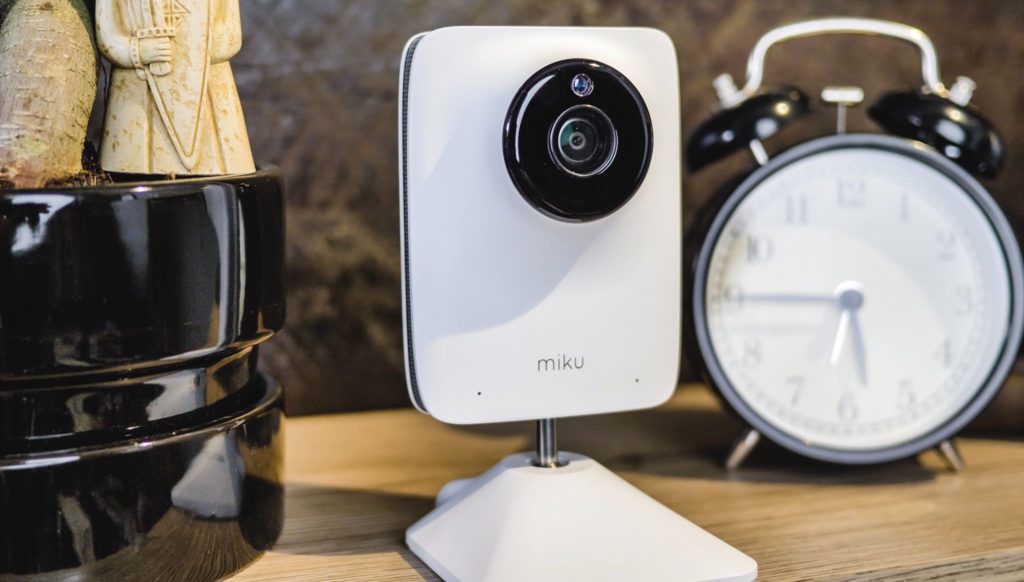
The Miku smart baby monitor is more expensive than other monitors, but when you consider the technology involved in it, the price seems more reasonable. Plus, there aren’t any membership or subscription fees to use core services. You pay once and then have access to the app plus upgrades as they come. If you want a breathing monitor that doesn’t involve a wearable device, then you’ll want to seriously consider the Miku smart baby monitor.
Miku Pro Baby Monitor vs. Nanit Pro Baby Monitor
It’s no secret that we love the Nanit Plus baby monitor (it’s our pick for best baby monitor of 2023), but Miku gives the Nanit a run for its money in a few ways. Here’s a quick comparison of how the two monitors stack up side-by-side.
Aesthetics: They both look great. We give this one to Miku because of its sleek design. It will look good in any room or nursery.
Video quality: Miku Pro and Nanit Pro both upgraded to 1080p and were big improvements over their predecessor models and resulted in more clear and detailed night vision. Nanit Pro still wins with a slight edge in video quality.
Sound quality: With its two high tech speakers, the sound that comes out of the Miku is clear. Unlike the Nanit Pro, which sounds more like you’re in a big room that echoes, the Miku sounds natural. So the Miku wins for sound output of the monitor (what your baby hears). However, when it comes to the app (what you hear), Nanit Pro is the clear winner. Nanit wins for sound output of the app.
White noise: Both baby monitors could use an upgrade here. Nanit wins mostly because we just don’t like the dystopian-type white noise options on the Miku.
Security: Both Miku and Nanit have 256-bit encryption. Miku stores encryption keys inside the physical tamper-proof chip so if it’s stolen or if you sold/gave away your monitor, the encryption key can’t be accessed. Nanit stores their encryption keys using a software-based system. Because we aren’t security experts, we aren’t going to make a claim on which one is safer for you.
App UX: Both apps are straightforward and clean, but the Nanit app provides more useful functionality like sleep coaching. The settings tab on the Nanit gives you more control over customizing features like crib position and security positions and bandwidth settings. The Nanit also has an insights package for you to make use of your data. Until another monitor can provide this level of support, the Nanit Pro will continue to have this as their ace in the hole to trump all wifi monitors. The award for app UX goes to Nanit.
We hope that was helpful for determining whether the Miku smart baby monitor is right for you. And if you’re looking for a monitor with a lot of potential, Miku’s got that.
To explore our picks for best baby monitor, and how we think about what’s important in baby monitors, head over here.
Pricing & where to buy
The Miku isn’t cheap—it’s $399 for everything you need to set up and use the monitor.
Miku is available on Amazon, but the place to buy is the company’s website, for a couple of reasons:
- You can see all of the company’s options, including bundles.
- Accessories including extra power supply (if you want to leave one at grandma’s, a floor stand, and more.
- Occasional sales and deals, definitely worth keeping an eye out for.
Final thing to note on price … Miku is HSA/FSA eligible due to its technology. If you have access to this as an option with your healthcare plan, you can buy the Miku with pre-tax money, which can make a big difference.
What’s next?
Hopefully that helps your decision about the Miku!
To see all of our baby monitor reviews and get more insights on how to select a baby monitor, head right over here …


